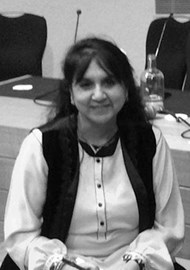This retrospective study was conducted to assess the treatment of 38 patients of chronic central serous chorioretinopathy with a 577-nm subthreshold micropulse laser (SML) Supra Scan Quantel Medical. Eighteen patients of these had persistent subretinal fluid (SRF) after photodynamic therapy. Thirty-eight eyes of 38 consecutive patients (29 men and nine women) were included in the analysis. The mean age of the patients was 51 years (range 32–69). The mean duration of disease before SML treatment was four years (range four months to 19 years). In this study, 17 eyes received one SML treatment, 15 eyes two, and six eyes three SML treatments. Assessment included visual acuity (VA), central retinal thickness (CRT) and resolution of SRF. Patients with evidence of other retinal diagnoses, such as choroidal neovascularisation or polypoidal choroidal vasculopathy, were excluded. Laser spots were applied with the Area Centralis contact lens (laser spot magnification ×0.94. The spot size was 160μm, the exposure time 0.2s, and a duty cycle of 5% was used. (A duty cycle of 5% allowed for the heat production time to be shorter than the thermal relaxation time for the space between the retinal pigment epithelium (RPE) and the neural retina, resulting in axial confinement of the increased heat at RPE). For confluent laser treatment, the multispot mode was chosen. The individual power for the patient was titrated at a normal area of the retina, near the affected area in the monospot micropulse mode. The power titration was started at 700mW and then gradually increased until a just visible burn was seen. When this threshold was reached, the power was reduced by 50%. The treatment outcome was evaluated using the best-corrected VA (BCVA), CRT and resolution of SRF. The BCVA improved in 17 out of 38 eyes (45%) by one or more lines (in eight eyes by one line, in five eyes by two lines and in four eyes by three or more lines). Fourteen eyes (37%) maintained vision, and seven eyes (18%) lost one or two lines (five eyes one and two eyes two lines). In most cases, the functional response set in early, while BCVA improved over a longer period of time. At the last follow-up (mean five months), 74% of patients responded to therapy. The CRT decreased after treatment (mean CRT –115μm, p<0.001) and VA improved (mean logMAR –0.06, p=0.039). No laser burns were detected with any imaging modality. In the subgroup of patients resistant to photodynamic therapy (PDT), 61% of patients responded to therapy with a decrease in CRT (mean CRT –75μm, p=0.019). The 577-nm SML was found to be an effective treatment for cCSC even in patients without sufficient improvement after PDT. Limitations of study include lack of randomised control trial (RCT), and short follow-up time.
Subthreshold micropulse laser treatment in chronic central serous chorioretinopathy
Reviewed by Sofia Rokerya
Subthreshold micropulse laser (577 nm) treatment in chronic central serous chorioretinopathy.
CONTRIBUTOR
Sofia Rokerya
MBBS MRCOphth FRCSI, King's College University Hospital, UK.
View Full Profile



